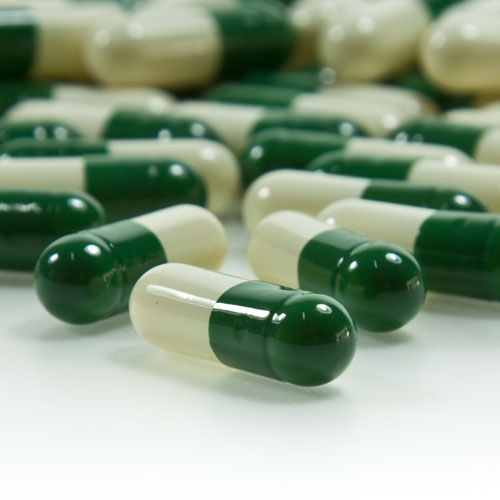The New Pain Management
When we sat down to write our end of summer newsletter, we planned to keep it light and simple. After all, it’s back to school, families are busy, the weather is still hot, and so on. However, the current spotlight on the opioid epidemic in America, plus recent changes to laws regulating the prescription opioids for chronic pain management in Florida has moved Chah Acutherapy into a new way of thinking about integrative pain management. With radical reductions to the amount of opioid pain medications that can be prescribed, the demise of pill mills and tighter controls between doctors and pharmacies, the medical community is currently in the midst of redefining best practices for pain management. Importantly, mainstream medicine is beginning to embrace ‘alternative’ non-pharmacologic interventions and therapies offered by acupuncture physicians. Our August newsletter kicks off a series on chronic pain management, addiction recovery, and new approaches for patients and physicians.
An American Story with a Terrible New Twist
 By now the opioid epidemic in the US is well documented, front page news. Opiates prescribed for acute and chronic pain turned out to be highly addictive. Cycles of addiction and overdose seeped into all levels of society: student athletes, soccer moms, professionals of all ages. Florida became the epicenter for the pill mills that stoked the epidemic in our local communities and across the nation. Opioids were abundant, often covered by insurance, and accessible. As legislators and law enforcement went after the pill mills, the people now dependent upon opiates turned from prescription opiates to another source: heroin. As we applauded the demise of pill mills and breathed a sigh of relief when overdoses from prescription pain medication began to trend down, we now know that heroin addiction and overdose has filled the vacuum left by the eradication of the pill mills.
By now the opioid epidemic in the US is well documented, front page news. Opiates prescribed for acute and chronic pain turned out to be highly addictive. Cycles of addiction and overdose seeped into all levels of society: student athletes, soccer moms, professionals of all ages. Florida became the epicenter for the pill mills that stoked the epidemic in our local communities and across the nation. Opioids were abundant, often covered by insurance, and accessible. As legislators and law enforcement went after the pill mills, the people now dependent upon opiates turned from prescription opiates to another source: heroin. As we applauded the demise of pill mills and breathed a sigh of relief when overdoses from prescription pain medication began to trend down, we now know that heroin addiction and overdose has filled the vacuum left by the eradication of the pill mills.
So as we head into the Fall of 2018, health care professionals are challenged to find a set of new, legal protocols and standards of care for several conditions: Acute pain and injury recovery; Chronic pain treatment and management; and addiction to opiates. Acupuncture Physicians and Chinese medicine practitioners have centuries of best practices in pain management to bring forward in this challenge. Read the full article on our website.
The Urgent Pain Management Challenge for Physicians and Patients
Simply put, people are still in pain and MDs are faced with much tighter restrictions on prescription pain medication. The legislation known as HB21 was signed into law in March of 2018 and as of July 1, 2018, there are much tighter restrictions for the prescribing of controlled substances. At the same time, there is growing advocacy at the State and Federal level for building awareness of acupuncture as a mainstream, evidence-based methodology for many conditions, especially pain management, while expanding patient access to certified acupuncturists nationwide.
The National Certification Commission of Acupuncture and Oriental Medicine (NCCAOM) is the main accrediting body for Acupuncture Physicians in the United States. Their advocacy team is fully engaged at the national level and getting results, that in the wake of the opioid epidemic, are extremely encouraging. As an example, here is a segment from an August 2018 Advocacy Action Alert from NCCAOM that speaks volumes on how present acupuncture has become in the conversation on pain management.
On July 9, the Food and Drug Administration hosted a public meeting on the topic of patient-focused drug development for chronic pain. The meeting focused on two main topics: symptoms and daily impacts of chronic pain, and patient's perspectives on current approaches to the treatment of chronic pain. While the FDA generally deals with pharmacological treatments, experts at the meeting specifically asked for patient comments on non-pharmacologic interventions and therapies. The FDA is continuing to solicit comments on the topics discussed at the meeting and is actively seeking patient perspectives. As patients turn to non-pharmacological treatments like acupuncture, the NCCAOM is working to expand awareness of the effects that our patients have seen in treating their chronic pain through acupuncture.
A New Dawn for Age-Old, Time-Tested Medicine
 At Chah Acutherapy, we are highly energized around the being a voice in the New Pain Management. If you’ve got all the way here, you are probably already an acupuncture patient or keenly interested in learning more about how acupuncture can address pain management and addiction recovery. Treatment is highly individualized and you will discover that there is more to the New Pain Management than acupuncture needles. Based on your blood chemistry and holistic intake exam, you might find yourself on a treatment plan that includes Tuina oriental body work, neuromuscular therapy (NMT), cupping, supportive Chinese herbs or ointments, and/or CBD Cannibinoid oil. True integrative pain management is dialed-in, personalized treatment that you and your acupuncture physician develop together.
At Chah Acutherapy, we are highly energized around the being a voice in the New Pain Management. If you’ve got all the way here, you are probably already an acupuncture patient or keenly interested in learning more about how acupuncture can address pain management and addiction recovery. Treatment is highly individualized and you will discover that there is more to the New Pain Management than acupuncture needles. Based on your blood chemistry and holistic intake exam, you might find yourself on a treatment plan that includes Tuina oriental body work, neuromuscular therapy (NMT), cupping, supportive Chinese herbs or ointments, and/or CBD Cannibinoid oil. True integrative pain management is dialed-in, personalized treatment that you and your acupuncture physician develop together.
Inflammatory pain can have numerous causes and an acupuncture physician has a wide range of modalities that by themselves, or in combination, can not only ease pain, but also turn on the body’s ability to heal itself. Significantly, prescription pain medications, over time, turn off the body’s ability to manage pain and to rest and to heal. Acupuncture works to re-open channels and renew the body’s ability to manage pain and healing.

